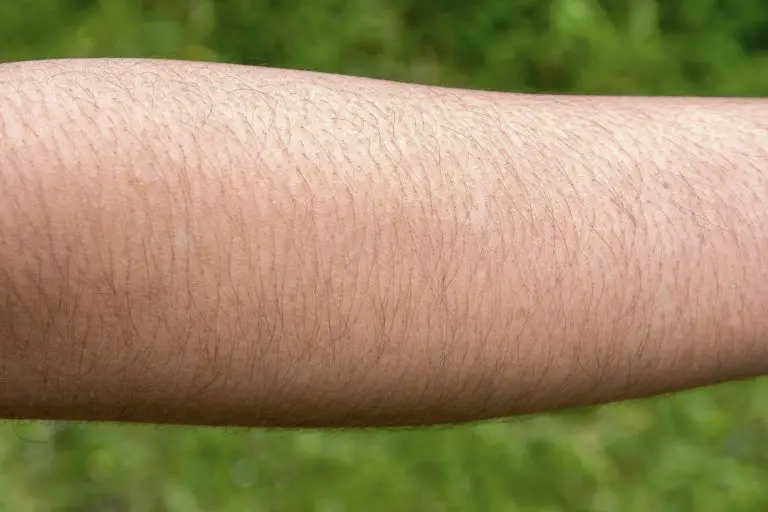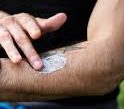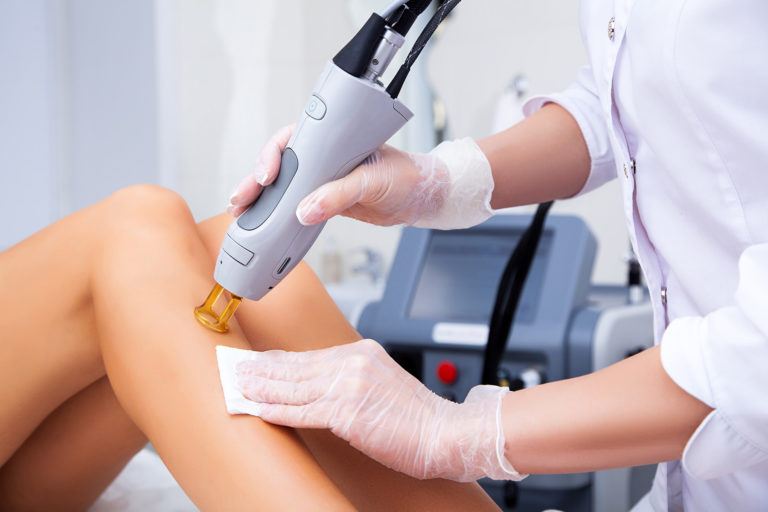
When I was about five years old, my dad told me that someday, because of my lucky genes, my arms would be so hairy I wouldn’t need to wear a coat in the winter. I accepted this as a point of family pride until puberty hit and I discovered that he wasn’t far wrong. I now have more arm hair than my husband, though mine is—I’m happy to report—much finer and lighter in color.
Because I have such hairy arms, I’ve always been jealous of women with little or no arm hair. I notice them in movies, in magazines, ahead of me in line at the grocery store. And since I myself am relatively low-maintenance, it didn’t dawn on me until recently that most of them probably didn’t come by their smooth, hairless arms naturally. Most of them, I now suspect, rely on one of the hair removal techniques below in order to get rid of arm hair.
The major determinant of how much arm hair you will likely end up with is not your diet or skin care regimen, but rather your genetic code. If you are someone who is just going to have arm hair, there are fortunately some things you can do to make the hair less conspicuous, or get rid of it altogether.
Best Ways to Get Rid of Arm Hair
Waxing
Waxing is a popular way to get rid of arm hair. It is not terribly expensive, and most salons and aesthetician have someone on staff who can do it in no time.
“But does waxing your arm hair hurt?” It’s painful, sure, but that part is over quickly and then your arms are smooth and completely hairless for at least two weeks. Depending on how quickly your hair grows, you may only have to wax your arms once every couple of months. If you’d rather have your arms waxed professionally, most salons offer a choice between a whole arm wax or a less expensive half arm wax, which should do the trick as long as you don’t have much upper arm hair.
If you are on a tight budget or just prefer to be able to wax your arm hair regularly, you can use an at-home waxing kit to yank the hair out of your arms.
Veet has wax strip kit from Amazon that may help you here.
Doing the home-based waxing might be a little riskier, as the chances of not getting it “just right” are higher at first. If you are skittish about doing this to yourself, or about having someone in your home do it, go to a salon. If you feel pretty confident that you can pull it off (pun intended!) then perhaps watch a Youtube video first and give it a try. You have a little more margin for error on your arms than, say, your eyebrows. If you walk around with a rash for a couple days, it won’t be noticeable under the right clothing.
Trimming
Trimming is a good option for long, light-colored arm hair. Because of the way arm hair lies flat across the surface of the skin, shorter hair actually looks like less hair. My hairstylist, who claims her arm hair naturally grows long enough to braid, swears by this method of arm hair removal. Trimming arm hair is best done the way she does it: with an electric hair clipper that has an adjustable blade to keep the length of the hair consistent and not too long or too short. As long as you don’t shave all the way down to the skin, you should only have to trim your arm hair once every month or two.
There is an old belief that trimming arm hair (or any hair) will make it grow faster. This is a myth. Trimming hair does not accelerate its growth rate. It does make the hair look healthier, which is probably where the popular myth comes from.
Shaving
Shaving arm hair is a convenient way to get rid of it as long as you’re on board for frequent upkeep. Contrary to the oft-told myth, just like cutting, shaving doesn’t actually make hair grow back darker or thicker, but because individual hairs are tapered and the razor cuts them off at one of their thickest points, they are temporarily less soft when they start to grow back.
If you choose to shave your arms, you should expect to see stubble a few days later—and you should plan on shaving them at least once or twice a week thereafter. Just like people who shave any other part of their body — face, back hair, or legs — shaving arm hair requires regular maintenance and upkeep.
If you shave, get ready for a couple days of potentially itchy hair as it begins to grow out again. That is because the whole process of shaving and having the follicle begin to push new hair up past the skin irritates the skin. Just be ready for a little itch, and use some lotion or after-shave if you need.

Hair Removal Creams
Hair removal creams can be used to get rid of arm hair. Like shaving, depilatory cream removes the hair at the surface of the skin, so it grows back at about the same rate. Because it dissolves the hair with chemicals instead of slicing it off with a blade, some claim that hair removal lotion reduces the stubbly appearance of the hair as it regrows. If you use a depilatory to remove unwanted arm hair, you may need to reapply it as often as once a week to keep your arms smooth.
Any hair removal cream may irritate your skin or cause side effects. After all, they are chemicals that are meant to harm your hair. Just be sure you get the cream from a reputable manufacturer, not a fly-by-night outfit that is run from an unregulated country.
But there are several creams that you can trust. One we like is Nair from Amazon.
Bleaching
It’s very common to bleach arm hair instead of actually removing it. Bleaching cream can also be used in conjunction with trimming to reduce the appearance of arm hair. Hair bleaching products use hydrogen peroxide to remove the pigment from unwanted body hair. How long your arm hair will stay lightened after bleaching depends on how quickly it grows; some people only need to bleach their arm hair a few times a year.
Bleaching hair obviously doesn’t eliminate the hair, it will still be there. So if you need to look good for some high-resolution closeups, bleaching might not be the answer for you.
It’s also possible to bleach arm hair naturally in the sun, but then you risk running up against that whole skin cancer issue. We would always recommend that you use sunscreen, to prevent sunburn and the conditions that can arise from long-term sun damage.
Remove Arm Hair Permanently

Electrolysis
Electrolysis is the only method of hair removal that is recognized by the FDA and the American Medical Association as being permanent. It’s a process in which a tiny electrode is inserted into the skin alongside each individual hair shaft. Electrical current passes through the hair follicle, destroying it and preventing the hair from growing back. Because the arms are such a large area, if you choose electrolysis to remove arm hair, it will probably take several months of repeat treatments before you see the permanent results you’re looking for.
Electrolysis is usually done in multiple appointments because it can be pretty involved. However, compared to laser hair removal (next) it tends to have fewer side effects and is easier on the skin, once you get past some initial irritation the first day.
Laser Hair Removal
While not technically permanent, laser hair removal can keep your arm hair out of the picture for years. Brown or black hair follicles absorb the intense heat of a laser beam aimed at the skin, which damages the follicles enough to slow the growth of hair from them. If your arm hair is blonde or your complexion is dark, laser hair removal won’t be very effective. Even if you are light-skinned with dark arm hair, you can expect to undergo several laser hair removal treatments before you no longer have any noticeable hair regrowth on your arms.
One advantage that laser hair removal has over electrolysis is that it can usually be completed in just one session. It is pretty fast. Electrolysis typically requires multiple sessions because it is more intricate.
Still, go into any laser hair removal procedure with your expectations set. Laser hair removal has some downsides and common side effects which are well-documented, but for many it is a solution that tends to work.
Using a Hair Inhibitor
Hair inhibitor cream is becoming increasingly popular, and lately its active ingredients (plant extracts, usually, that slow the growth of the plant or help keep buds dormant) have been crossing over into other products like antiperspirants and shaving creams. You can use a hair growth inhibitor in conjunction with any of the arm hair removal techniques on this page, but you’ll get better results if you’re waxing, sugaring, or using another method that removes the hair at the follicle. Kalo Post Epilating Solution, one of the more popular hair inhibitors, is offered as a lotion or a spray, and Aveeno Positively Smooth Moisturizing Lotion should be available wherever you shop.
Natural Hair Removal Products
Body Sugaring
Body sugaring is a popular natural alternative to waxing. Lately, it has become one of the more popular ways to deal with wanted hair and even get rid of a unibrow.
Homemade options are available, but just know that these have not been widely tested. Recipes are widely available for making your own sugaring on the stove, using a base of water, lemon juice, and granulated sugar.
If you’d rather just warm up a jar, ready-made sugaring products are available from plenty of sources, including The Body Shop. These products are intended to be used regularly — as often as every 2 weeks if you really want to keep your arms (or whatever region you are treating) tidied up. You apply them for about 10 minutes and them wash them off, so it is a pretty simple process.
One brand that we have always liked is Nad’s, which we write about in the next section as well. Nad’s is sold on Amazon and from other distributors as well.
Nad's
Nad’s offers a large selection of natural products for removing arm hair and other unwanted body hair. Try their Hair Removal Gel, Hair Removal Wax Strips, or Sangria Punch Warm Gel to quickly pull out arm hair by the follicles, or the HandsFree Hair Removal Crème to dissolve visible arm hair.
Nad’s is carried by large retailers like Target and Bed Bath and Beyond. If you want to order it for deliver, you can also find it on Amazon. It tends to be one of the old “standbys” for DIY hair removal, and has been around since 1992.
Wear Long Sleeves!
If you are in a pinch and don’t have the time (or the bravery) to wax, laser, or cream your arms, you can always wear long-sleeve shirts. We often see people who are afflicted with Psoriasis wear long sleeve shirts year-round, to cover up the scaly patches on their skin.
This trick isn’t only useful for skin conditions, though. It can also be an easy way to conceal your arm hair.
Arm Hair Removal FAQs
Does arm hair always grow back?
Generally, yes, but some methods will keep arm hair away for longer than others. Electrolysis is probably the most permanent solution, especially if done by a professional. It zaps the arm hair at the follicle and closes it off to future growth.
Laser removal is probably the “next most permanent” but it will still grow back, slowly. Other methods will keep arm hair at bay for a couple weeks, but you will need a regular routine of keeping up-to-date on these solutions.
Does Arm Hair Get Longer with Age?
Unless you have certain medical conditions, the opposite should actually be true. Arm hair should get shorter and less dense with age. Because your body hormones change and tend to decrease with age, the hair on all parts of your body responds accordingly. Just like how your head hair may thin out over time, you should notice that your arm hair does as well.
Can Excessive Arm Hair Growth Be a Medical Issue?
Yes, there is a condition called Hirsutism in which females develop excessive hair growth. It is usually caused by high levels of body hormones like androgen. Hirsutism is not exclusive to arms. In fact, it is commonly most noticeable on the face or back. It can be treated.
Can Medications Cause Arm Hair Growth?
Yes. Medications can cause many changes in the patterns of hair growth, and arm hair is no exception. Medications and drugs that can cause arm hair growth include anabolic steroids, minoxidil (often used for treating thin head hair) and the anti-seizure medication Phenytoin, among others.
If you suspect that unwanted hair growth is a side-effect of a medication you are on, it is best to talk to your doctor.